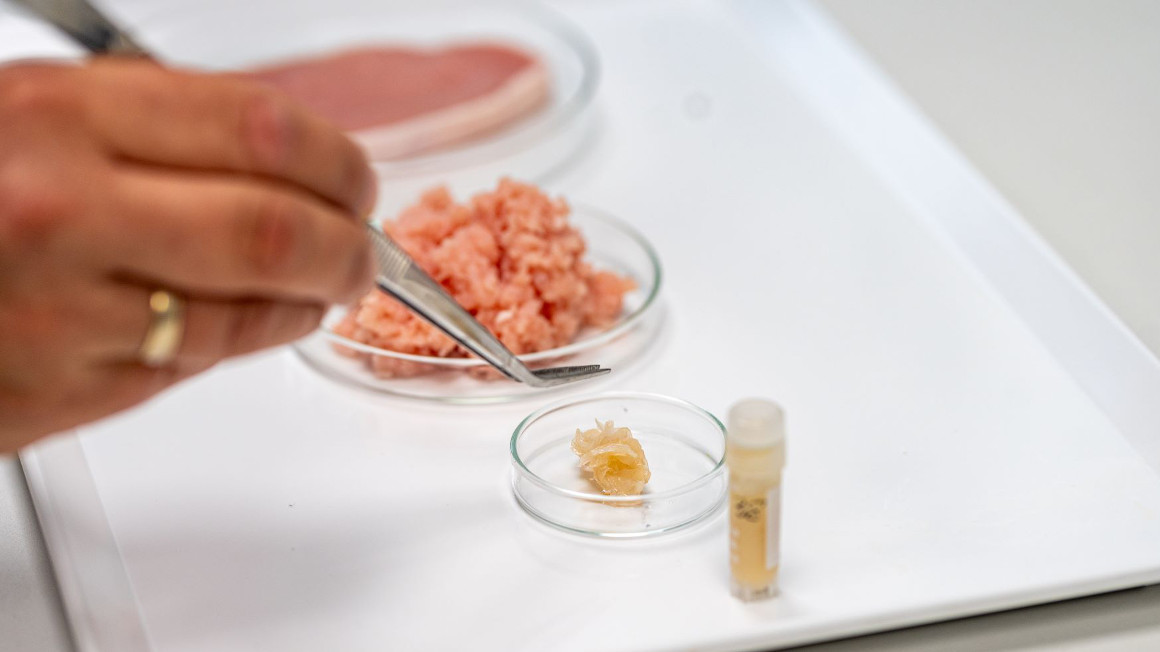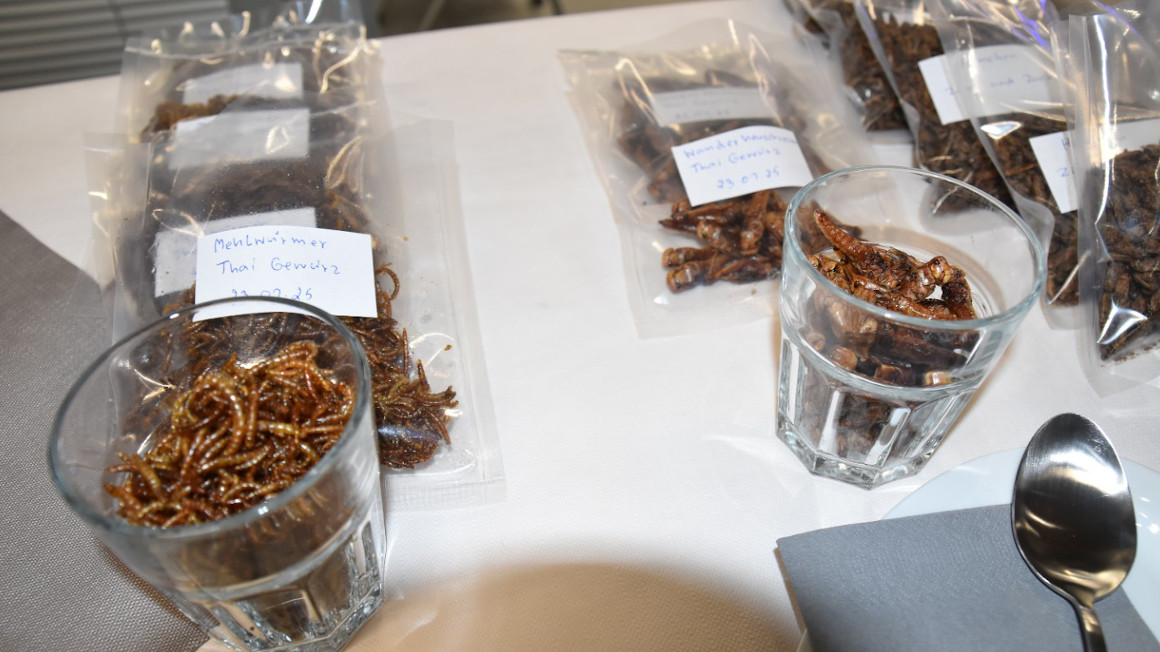Producing meat with stem cells from umbilical cord blood
A research consortium has succeeded in producing laboratory meat from stem cells obtained painlessly from the umbilical cord blood of piglets.

In order to be able to feed the growing population in 20 years' time, researchers have long been looking for alternatives. One promising option could be lab-grown meat. There is great interest in so-called cell-based meat. Numerous start-ups and research institutions around the world are now working on producing meat without animals having to suffer or be killed. To produce cell-based meat, muscle stem cells are usually taken from an animal and cultivated in a petri dish. In the Cellzero Meat project, researchers led by Anhalt University of Applied Sciences have now successfully established a completely new approach for the in vitro production of meat.
Stem cells from umbilical cord blood instead of animal muscles
Instead of extracting stem cells from the muscles of animals, the team used stem cells from the umbilical cord blood - specifically from piglets. According to the researchers, this innovative harvesting method is completely painless for the animal and could therefore be an alternative to the previous stem cell harvesting method.
The Cellzero Meat project was funded by the Federal Ministry of Education and Research (BMBF) from July 2022 to June 2024 as part of the ‘New Products for the Bioeconomy’ ideas competition with a total of 656,608 euros. In addition to Anhalt University of Applied Sciences, the Research Institute for Farm Animal Biology (FBN) in Dummerstorf near Rostock, the Leibniz Institute for Plasma Research and Technology e. V. in Greifswald and PAN-Biotech GmbH in Aidenbach were involved in the project.
Algae instead of animal serum as a culture medium
The researchers' aim in the project was not just to avoid animal suffering. ‘We wanted to make the process as sustainable as possible overall,’ explains Wolfram Schnäckel from Anhalt University of Applied Sciences. To grow the cells in the bioreactor, the team therefore chose a culture medium made from algae instead of one from slaughtered animals. In addition, cold plasma was used instead of antibiotics to keep the production process sterile.
Typical meat tissue and flavour
After two years of research, it is clear that the new approach works. As the team reports, the stem cells from the umbilical cord blood formed muscle, fat and connective tissue cells in the algae culture medium as hoped. ‘They can be used to produce typical meat tissue through a 3D printing process - for products ranging from burger patties to schnitzel,’ write the researchers. ‘Even the typical meat flavour, which only matures during storage, is produced by our laboratory meat,’ emphasises Schnäckel.
At present, only a few grams of laboratory meat have been produced in the bioreactor in this way. Next, the researchers want to further develop the sustainable method so that the cell-based meat can also be produced on an industrial scale. Follow-up projects for this scale-up are already being planned.
New source of income for agriculture
However, the new method for producing in-vitro meat developed in the Cellzero Meat project would not only prevent animal suffering or slaughter. Schnäckel sees a further advantage: ‘The sale of umbilical cord blood would also be an additional source of income for agriculture once laboratory meat has also become established on European markets.’
Singapore and the USA are the only countries in the world where lab-grown meat is already authorised. In the EU, the sale of cell-based meat is not yet authorised. In September, The Cultivated B from Heidelberg was the first company in the world to submit an application to the European Food Safety Authority (EFSA) for authorisation of a cell-based sausage product.
bb


